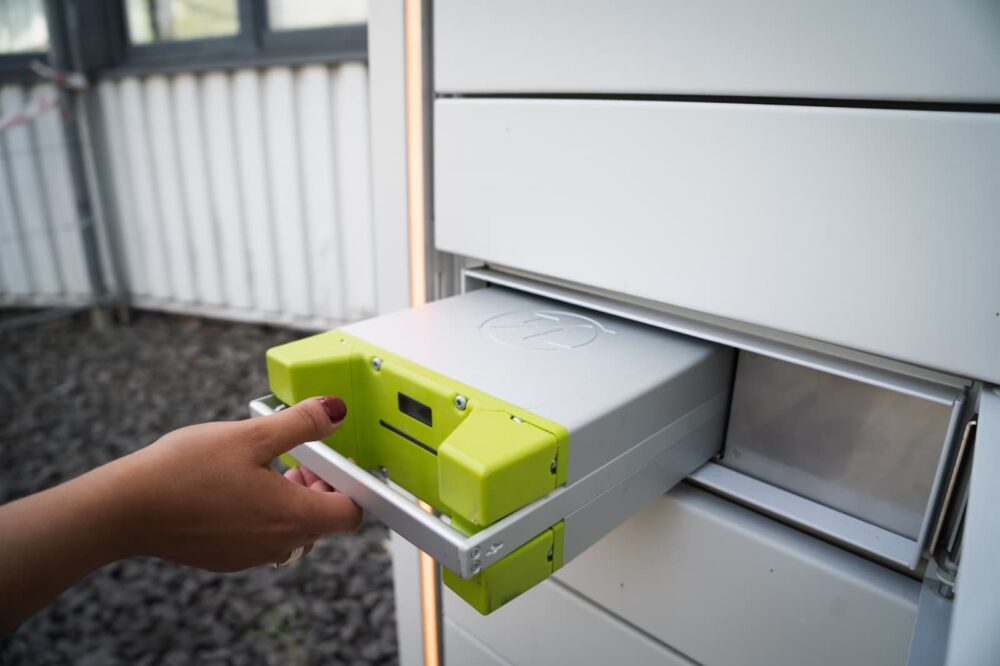Batteries play a critical role in modern life, powering essential devices and supporting renewable energy systems. However, when it comes to moving, the safe handling and transportation of batteries require specialized knowledge and attention to detail. Ensuring the integrity of batteries during transit is both a responsibility and an art.
This comprehensive guide delves into advanced techniques and considerations for safely packing and moving batteries. It also explores how professional moving companies, such as Bielov Transporte, can provide essential support in this process.
Advanced Insights into Battery Safety
Before addressing packing and transportation, it’s essential to understand the unique risks associated with batteries. Improper handling can lead to:
- Thermal Runaway: A serious risk with lithium-ion batteries, where internal damage can lead to overheating and potential combustion.
- Chemical Spillage: Particularly relevant for lead-acid batteries, where leaks can cause corrosion or harm to the environment.
- Regulatory Non-Compliance: Many batteries fall under hazardous materials regulations, necessitating strict adherence to legal requirements.
The goal is to mitigate these risks while educating others on the importance of proper battery management.
Professional Techniques for Packing and Transporting Batteries

1. Precise Identification and Classification
Categorizing batteries correctly is paramount. Beyond basic identification, consider:
- Voltage and Capacity Ratings: Critical for calculating discharge and storage needs.
- Material Composition: Understanding lithium-cobalt, lithium-iron phosphate, and other chemistries for tailored handling.
- End-of-Life Considerations: Identifying batteries nearing the end of their cycle to prevent failures during transit.
Correct classification not only ensures safety but also aids in compliance with transportation regulations.
2. Optimized Discharge Levels
Ensure all batteries are discharged to safe levels prior to transport:
- Lithium-Ion: Discharge to 30-40% capacity to reduce internal pressure.
- Lead-Acid: Maintain a charge sufficient to prevent sulfation but low enough to avoid leakage.
For long-term storage during a move, consider advanced storage solutions like thermal-regulated containers. These prevent temperature fluctuations that could compromise battery integrity.
3. Advanced Inspection Protocols
Conduct thorough pre-transport inspections:
- Use thermal imaging to identify hotspots in lithium-ion batteries.
- Conduct electrolyte tests for lead-acid batteries to ensure no internal degradation.
- Inspect for micro-cracks in casings that could compromise safety.
Regular maintenance and inspection of batteries before transit can help avoid issues that might arise during the move.
4. Specialized Packing Materials
Standard packing materials may not suffice. Consider:
- Electrostatic-Resistant Bags: Prevent static discharge, especially for lithium-ion batteries.
- Custom Foam Inserts: Designed for the exact dimensions of industrial or custom batteries.
- Non-Conductive Barriers: Separate battery terminals to avoid accidental short circuits.
Additionally, use strong, impact-resistant outer boxes to safeguard batteries from physical shocks during transit.
5. Industry-Specific Labeling and Documentation
Comprehensive labeling ensures safe handling and regulatory compliance:
- Include UN Numbers and classifications per IATA and DOT standards.
- Use QR codes linked to Material Safety Data Sheets (MSDS) for instant access to safety protocols.
- Clearly indicate the direction (e.g., “This Side Up”) for sensitive batteries.
Proper documentation also helps in case of inspections during the transportation process.
6. Environmental and Weather Considerations
Transporting batteries during extreme weather conditions requires additional precautions:
- Heat Protection: Lithium-ion batteries can overheat, leading to potential hazards. Transport them in insulated or climate-controlled containers.
- Moisture Resistance: Protect batteries from high humidity by using sealed and desiccant-filled packaging.
- Cold Weather Precautions: Prolonged exposure to cold can reduce battery performance. Consider insulated storage if moving during winter months.
Accounting for environmental factors ensures the longevity and safety of batteries.
7. Training and Awareness
Train anyone involved in the moving process on battery handling best practices:
- Highlight risks associated with mishandling specific battery types.
- Provide instructions for handling emergencies, such as leaks or thermal runaway events.
- Ensure familiarity with transport regulations and compliance requirements.
Proper training minimizes the likelihood of accidents during the move.
Collaboration with Professional Movers
Partnering with experienced moving companies can streamline the process. Companies like Bielov Transporte specialize in the secure transport of sensitive and hazardous materials, including batteries. Here’s how they complement these efforts:
- Custom Handling Solutions: They work with industry professionals to design tailored transport methods for industrial batteries.
- Regulatory Mastery: Their teams stay updated on evolving transport laws, ensuring compliance at every step.
- Specialized Fleet: Equipped with temperature-controlled and vibration-resistant vehicles to protect battery integrity.
- Integrated Insurance: Providing peace of mind with coverage tailored to high-value energy storage systems.
Professional movers not only mitigate risks but also save time and effort, allowing individuals or businesses to focus on other priorities during a move.
Professional Recommendations for Streamlined Operations
1. Develop Comprehensive Battery Inventories
Maintain detailed records of battery types, quantities, and conditions before transport. Advanced software solutions can automate inventory tracking and integrate with logistics systems.
2. Invest in Cutting-Edge Transport Equipment
High-capacity power storage units and battery transport cases designed for industrial use are invaluable. For instance, consider:
- Shock-absorbing battery crates for seismic stability.
- Humidity-controlled enclosures for sensitive chemistries.
3. Lead by Example in Recycling and Disposal
Promote sustainable practices by setting up or partnering with certified recycling programs. This demonstrates responsibility and aligns with global efforts to reduce e-waste.
4. Pre-Move Risk Assessment
Conduct a thorough risk assessment before any large-scale battery relocation:
- Evaluate routes for hazards, such as extreme temperatures or rough terrain.
- Plan for contingencies, such as delays or accidents.
- Review compliance requirements for each region or country involved in the move.
5. Secure Long-Term Storage Options
If batteries need to be stored for an extended period during or after the move, ensure they are kept in a secure, climate-controlled facility. Regular inspections can help detect and address potential issues early.
6. Emergency Preparedness
Prepare for potential emergencies during transport by having:
- Fire extinguishers designed for electrical fires.
- Spill containment kits for lead-acid batteries.
- A clear protocol for managing thermal runaway events.
Emergency preparedness is a crucial part of ensuring a safe and incident-free move.
Ensuring the safe handling and transportation of batteries is critical for preserving their integrity and functionality. By implementing advanced packing techniques, leveraging industry-leading materials, and collaborating with professional movers like Bielov Transporte, the risks associated with battery relocation can be effectively mitigated.
Whether overseeing the transport of consumer-grade batteries or managing industrial-scale energy storage systems, meticulous preparation is key. With the right strategies and resources, the transition can be both seamless and safe, reinforcing the vital role that batteries play in powering the world.
By focusing on safety, compliance, and environmental responsibility, the process of transporting batteries can be a model of efficiency and care, contributing to the sustainability and advancement of energy solutions worldwide.



